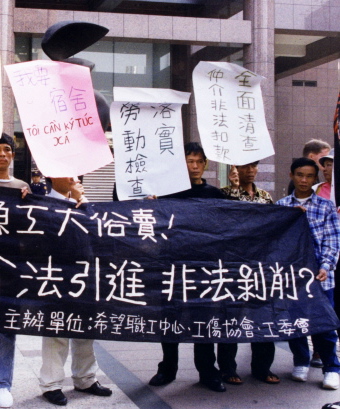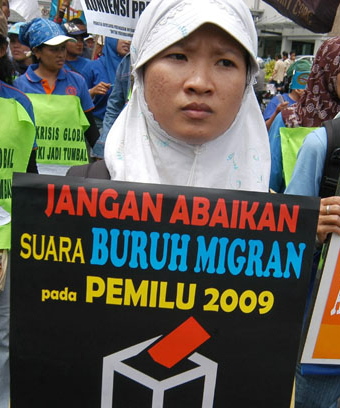Indonesia is blessed with considerable potential for renewable energy generation, but so far has been slow to grasp it
Indonesia is blessed with considerable potential for renewable energy generation, but so far has been slow to grasp it
Abidah B Setyowati
Early last year during the rainy season I visited Kamanggih, a village on Sumba Island, Indonesia, to carry out fieldwork research. Accompanied by Pak Umbu, a local leader who has advocated the adoption of renewable energy technologies for rural electrification, we navigated slippery terrain along a cliff to check a mini-hydro power plant run by a community cooperative. The island is one of the areas with the lowest electrification rates in the country and after decades of living without electricity the villagers were able to electrify their village, early in 2010, with the assistance of a development organisation. For many villagers, access to electricity is not just access to lighting but also signifies progress, modernity and a sense of belonging. As one villager put it, ‘We feel like we are part of Indonesia after the electricity comes to our village. It’s been decades that we have waited for this to happen.’
However, what happened in this village is the exception rather than the rule in Indonesia. Until very recently, around 25 million people in the country were living in energy poverty with limited or no access to modern energy sources. Far from being evenly distributed, the middle and eastern parts of Indonesia continue to suffer from regular blackouts and power deficits. At the same time the western part of the country, particularly Java and Bali and other large urban areas, receive relatively stable and reliable electricity supply. This reflects the broader challenge facing the government as it tries to balance three key energy objectives: achieving equal access to modern energy sources while ensuring energy security and addressing climate change concerns.
The availability of technologically advanced and increasingly cheap renewable energy creates possibilities for addressing these challenges, and the government has made efforts to tap into this opportunity by drafting policies to stimulate the uptake of renewable energy. This includes developing a national energy policy (KEN) in 2014 that targeted renewable energy to provide at least 23 per cent of total energy generation by 2025 and 31 per cent by 2050. These goals were aligned with the country’s ambitious commitment for carbon emission reductions under the Paris Agreement, as well as the government’s goal of achieving nearly universal electrification by 2020 (it currently stands at approximately 98 per cent although quantifying electrification can be imprecise, particularly in rural areas).
Various other regulations aimed at increasing the adoption of renewable energy technologies have been rolled out, such as a regulation to stimulate private sector participation in the renewable energy sector and a regulation on the installation of rooftop solar PV systems. Yet rapid transition to low carbon energy requires more than just technical fixes. As detailed below, various governance challenges may be standing in the way or slowing down what are otherwise technologically and economically feasible solutions.
Rich renewable resources, slow uptake
Indonesia is blessed with considerable potential for renewable energy generation such as geothermal, hydropower, solar and wind that could provide up to 788,000 megawatts (MW) of power. To meet the government’s renewable energy target, around 14,000 MW of this potential needs to be developed – apparently a moderate goal given the wealth of resources available. While the government currently focuses mainly on large-scale centralised technologies – especially hydro and geothermal power – solar and wind hold significant potential, particularly in remote areas where other renewable technologies may not be accessible or economically viable.

Despite the bold target, the uptake of renewable energy has been slow, accounting for only 12.2 per cent of installed capacity in 2019. Critics say that Indonesia is unlikely to meet its renewable energy target and my research finds several major barriers persist which are preventing Indonesia from rapidly transitioning to more low-carbon energy sources.
One of the key reasons is Indonesia’s complex regulatory landscape combined with multiple misaligned policies. For instance, subsidies for fossil fuels and the low price-cap set for renewable energy produced in the Java–Bali grid create an uneven playing field for renewable energy. Further, constant policy changes in the sector have led to an uncertain regulatory environment that discourages investment. A conducive environment for private investment is essential as Indonesia needs an estimated A$51.73 billion to achieve its renewable energy target, and this is beyond the capability and resources of public finances alone.
The dominant role of the state-owned electricity company, Perusahaan Listrik Negara (PLN), in power generation, transmission and distribution also creates a substantial institutional barrier that hampers private sector development and crowds out investment. Although there have been waves of regulatory changes to reduce the company’s monopoly, approximately 70 per cent of electricity was still generated by PLN in 2018.
Compounding this situation is an embedded resistance to change that makes weaning the energy sector off its dependence on coal and nudging it towards renewable energy more challenging. The bidding process for private sector companies to participate in the electricity market is unclear and not transparent, creating ample room for graft. A corruption case about the tender for a power plant in Riau has involved key figures in the political arena and at PLN, giving an indication of just how entrenched corruption networks are in the energy sector.
Vested political interests and rent-seeking by the fossil fuel industry, particularly the coal lobby, continue to shape decision making in the energy sector. The close connection between key figures in Indonesia’s coal industry and those wielding political power has recently received some high-profile attention, for instance in the work of documentary filmmaker Dandhy Laksono. No evidence of illegality has surfaced, but it does create the impression of a conflict of interest.
Therefore, it is not surprising that coal remains a dominant source of Indonesia’s power generation, despite the government’s declared intention to transition to low-carbon energy. The complexity of energy policy in Indonesia is revealed by the fact that the government, despite its promises to reduce carbon emissions, still plans to double the installed capacity of coal-fired power plants over the next decade – an increase of some 27 GW or 48 per cent from total installed capacity.
In addition to these regulatory and institutional roadblocks, Indonesia’s archipelagic nature stretching across thousands of islands creates unique challenges in designing and operating electricity networks. This geographical diversity requires a combination of large grids on the big islands and smaller mini-grids serving more remote areas. This poses a range of logistical difficulties due to the long distances involved, poor quality of infrastructure and a fragmented distribution network.

The current approach to providing electricity still prioritises large-scale and on-grid electricity, often involving the construction of big power plants. This approach is not feasible for those who remain without access to electricity in remote and geographically isolated places. Infrastructure maintenance is also a major challenge, particularly with limited training provided to local operators. On Sumba, for instance, out of 9.8 MW installed capacity of renewable energy, only 37 per cent was still fully or partially operational due to lack of maintenance.
Moving forward
To ensure a rapid transition to low-carbon energy, innovative regulations and responsive governance is needed. There are some options to address regulatory and institutional barriers, such as undoing PLN’s monopoly over energy generation, retail and distribution; sequencing policy instruments in a clear and organised, rather than ad-hoc fashion; providing mechanisms to incentivise private sector investment and facilitating independent power producers to enter the market. Of course, the right policy prescriptions are not a secret and the government has doubtless been advised of them before. It is political barriers that are likely to continue constraining energy sector reform and, in the absence of strong political leadership and the desire to change the status quo, a sweeping renewable energy revolution might still be some ways away.
Yet, even if the political will is not there to take on PLN and the fossil fuel industry and drive big headline reforms, it would be a mistake to ignore the potential for developing moderate renewable energy resources in the more remote parts of Indonesia. Small-scale projects have been making some headway in recent years, such as a recently announced plan by the United Nations Development Programme funded by the Korea International Cooperation Agency to construct 23 communal solar PV systems in nearly two dozen rural villages in Sulawesi, East Nusa Tenggara and Kalimantan.
With an investment value of A$25.2 million and a total capacity goal of 1.2 MW, this modest project cannot compete with the scale of coal-fired power plant construction in Java and Sumatra. However, once completed, it will provide reliable electricity to some 20,000 villagers and have a meaningful impact on their lives. Until the politics and the policy mix is right at the national level, expectations for renewable energy in Indonesia should probably remain grounded and modest.
The flexibility of renewable energy technology is a good fit for Indonesia’s resources which are dispersed across a large and varied geographical area. As the technology becomes cheaper and more efficient it will create opportunities for a scaled-down, localised approach which can still lead to moderate capacity increases in places where it will have maximum impact. And this is something the people of Kamanggih can attest to.
Abidah B Setyowati is a Research Fellow at the School of Regulation and Global Governance, Australian National University.














